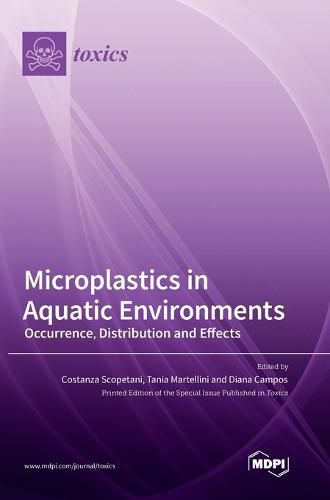Readings Newsletter
Become a Readings Member to make your shopping experience even easier.
Sign in or sign up for free!
You’re not far away from qualifying for FREE standard shipping within Australia
You’ve qualified for FREE standard shipping within Australia
The cart is loading…






This title is printed to order. This book may have been self-published. If so, we cannot guarantee the quality of the content. In the main most books will have gone through the editing process however some may not. We therefore suggest that you be aware of this before ordering this book. If in doubt check either the author or publisher’s details as we are unable to accept any returns unless they are faulty. Please contact us if you have any questions.
The large production and widespread daily consumption of plastic materials which began in the last century, together with the often inadequate collection and recycling systems, have made plastics and, consequently, microplastics (MPs) ubiquitous pollutants. Microplastic pollution as a global concern is confirmed by the research papers collected in this Special Issue; these papers come from 28 Universities and research institutions and are spread across ten countries on three continents. This Special Issue collected and published 11 novel contributions focusing on microplastics in aquatic environments, their occurrence and distribution, and the effects they might have on the environment and biota. As Guest Editors of this Special Issue, we were pleased to receive several papers concerning the interaction between microplastics and biota; despite a large number of peer-reviewed papers published on this research topic, there are still several gaps that need to be filled and there is concrete evidence suggesting that microplastic pollution may constitute a serious hazard to aquatic biota. The results of the contributions collected herein have helped to fill some knowledge gaps about the occurrence, distribution, and effects of microplastics on aquatic ecosystems. The outcomes clearly indicate that microplastic pollution is a serious environmental issue; the scientific community should increase its knowledge and understanding of how it could affect the environment, biota, and humans, and how it could be reduced and prevented.
$9.00 standard shipping within Australia
FREE standard shipping within Australia for orders over $100.00
Express & International shipping calculated at checkout
This title is printed to order. This book may have been self-published. If so, we cannot guarantee the quality of the content. In the main most books will have gone through the editing process however some may not. We therefore suggest that you be aware of this before ordering this book. If in doubt check either the author or publisher’s details as we are unable to accept any returns unless they are faulty. Please contact us if you have any questions.
The large production and widespread daily consumption of plastic materials which began in the last century, together with the often inadequate collection and recycling systems, have made plastics and, consequently, microplastics (MPs) ubiquitous pollutants. Microplastic pollution as a global concern is confirmed by the research papers collected in this Special Issue; these papers come from 28 Universities and research institutions and are spread across ten countries on three continents. This Special Issue collected and published 11 novel contributions focusing on microplastics in aquatic environments, their occurrence and distribution, and the effects they might have on the environment and biota. As Guest Editors of this Special Issue, we were pleased to receive several papers concerning the interaction between microplastics and biota; despite a large number of peer-reviewed papers published on this research topic, there are still several gaps that need to be filled and there is concrete evidence suggesting that microplastic pollution may constitute a serious hazard to aquatic biota. The results of the contributions collected herein have helped to fill some knowledge gaps about the occurrence, distribution, and effects of microplastics on aquatic ecosystems. The outcomes clearly indicate that microplastic pollution is a serious environmental issue; the scientific community should increase its knowledge and understanding of how it could affect the environment, biota, and humans, and how it could be reduced and prevented.